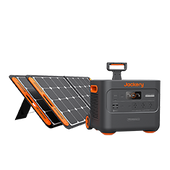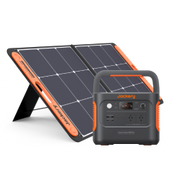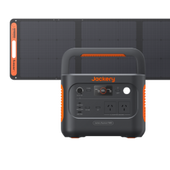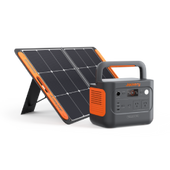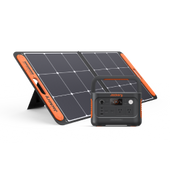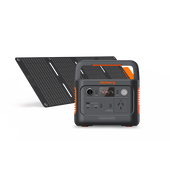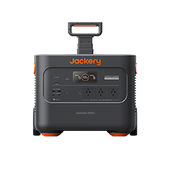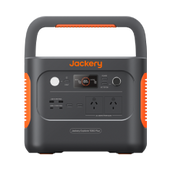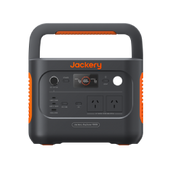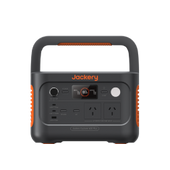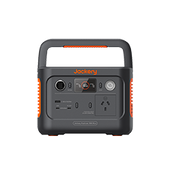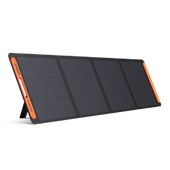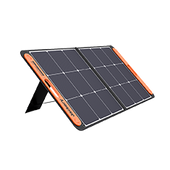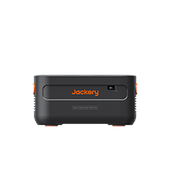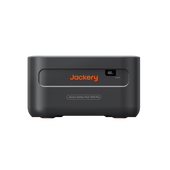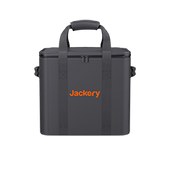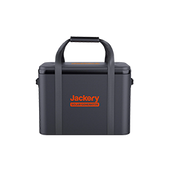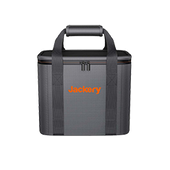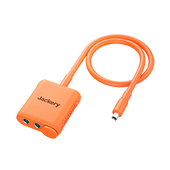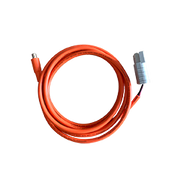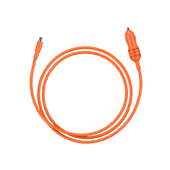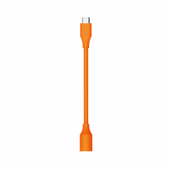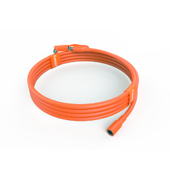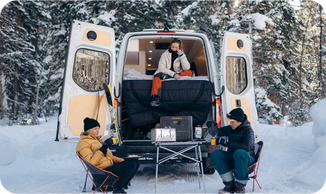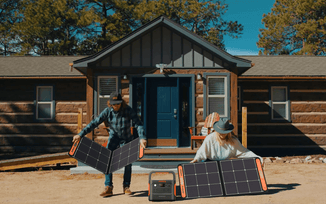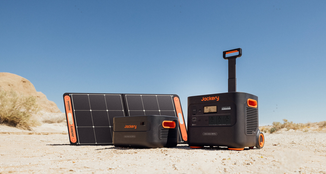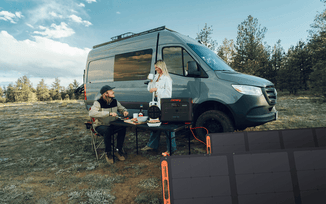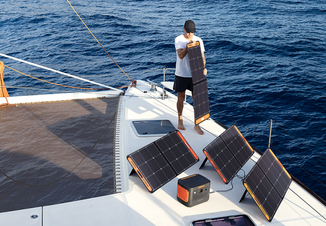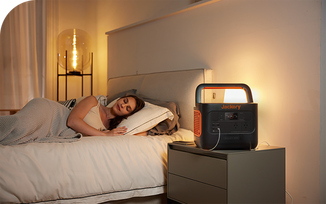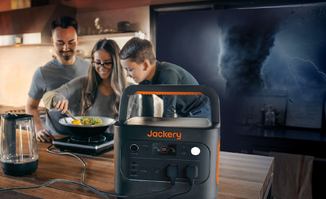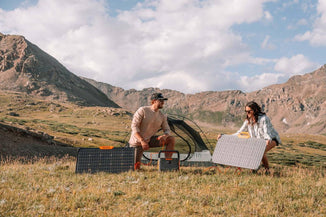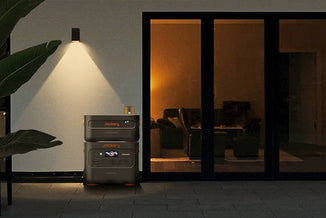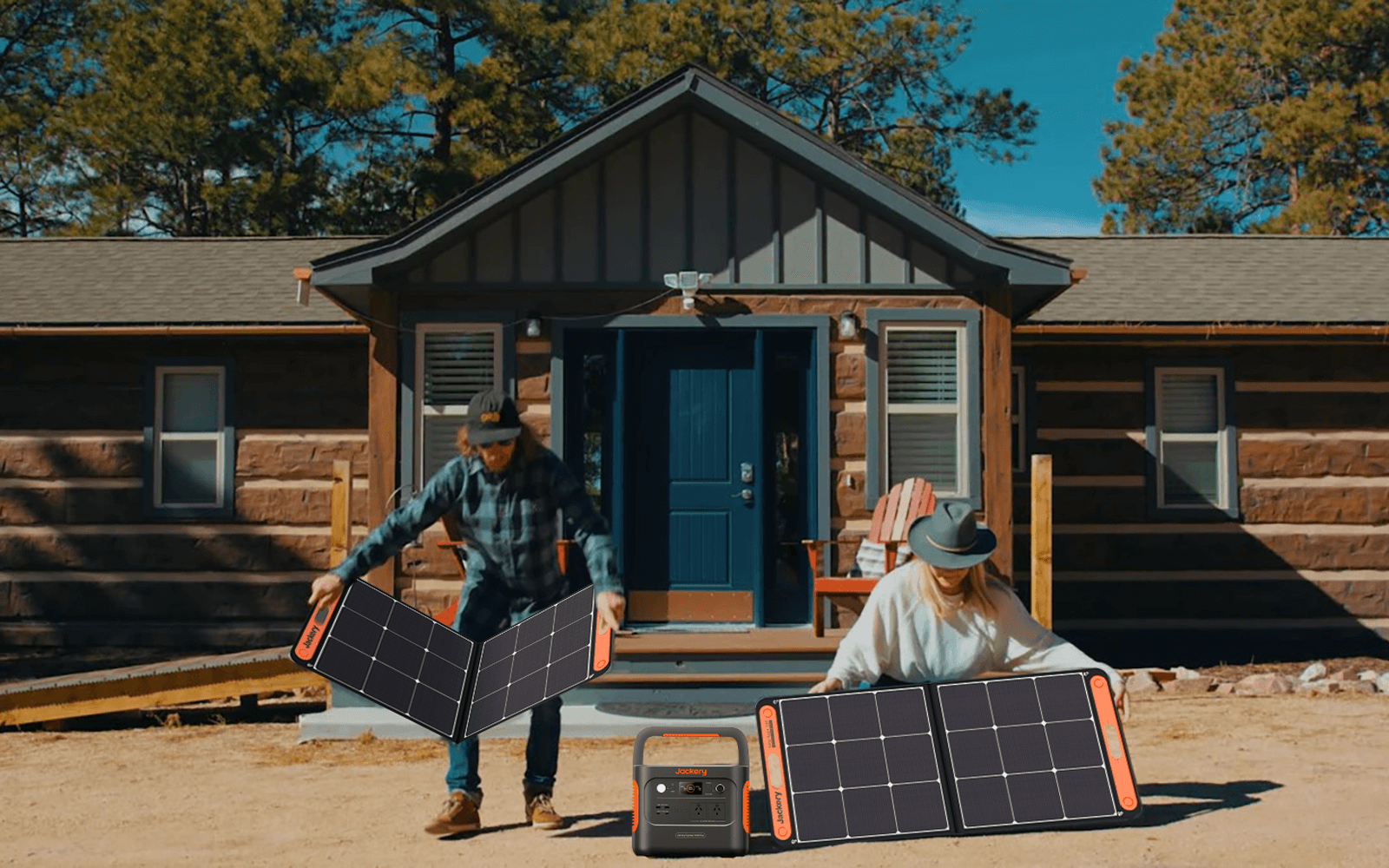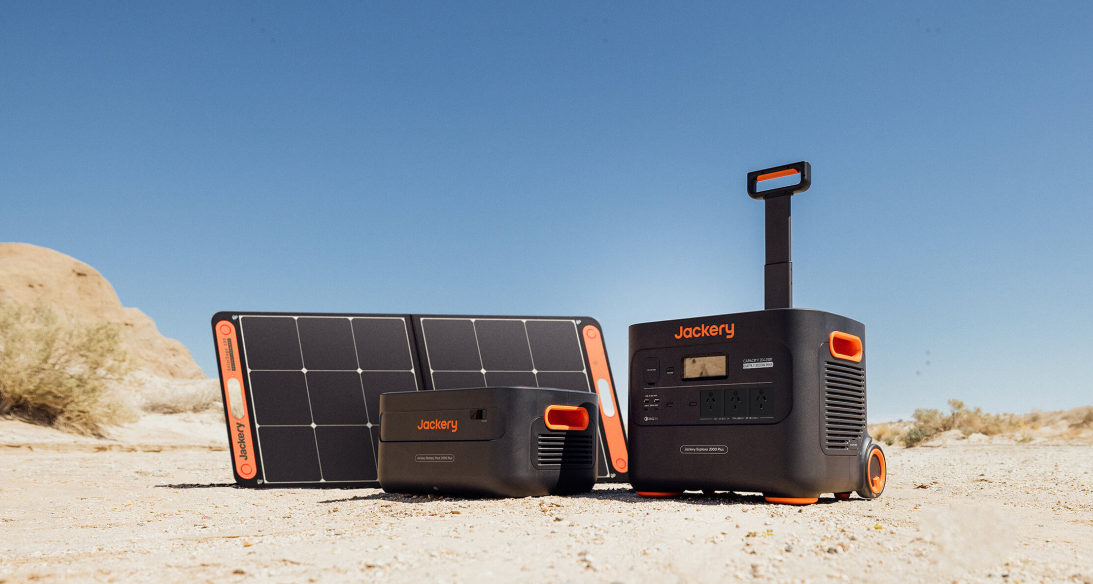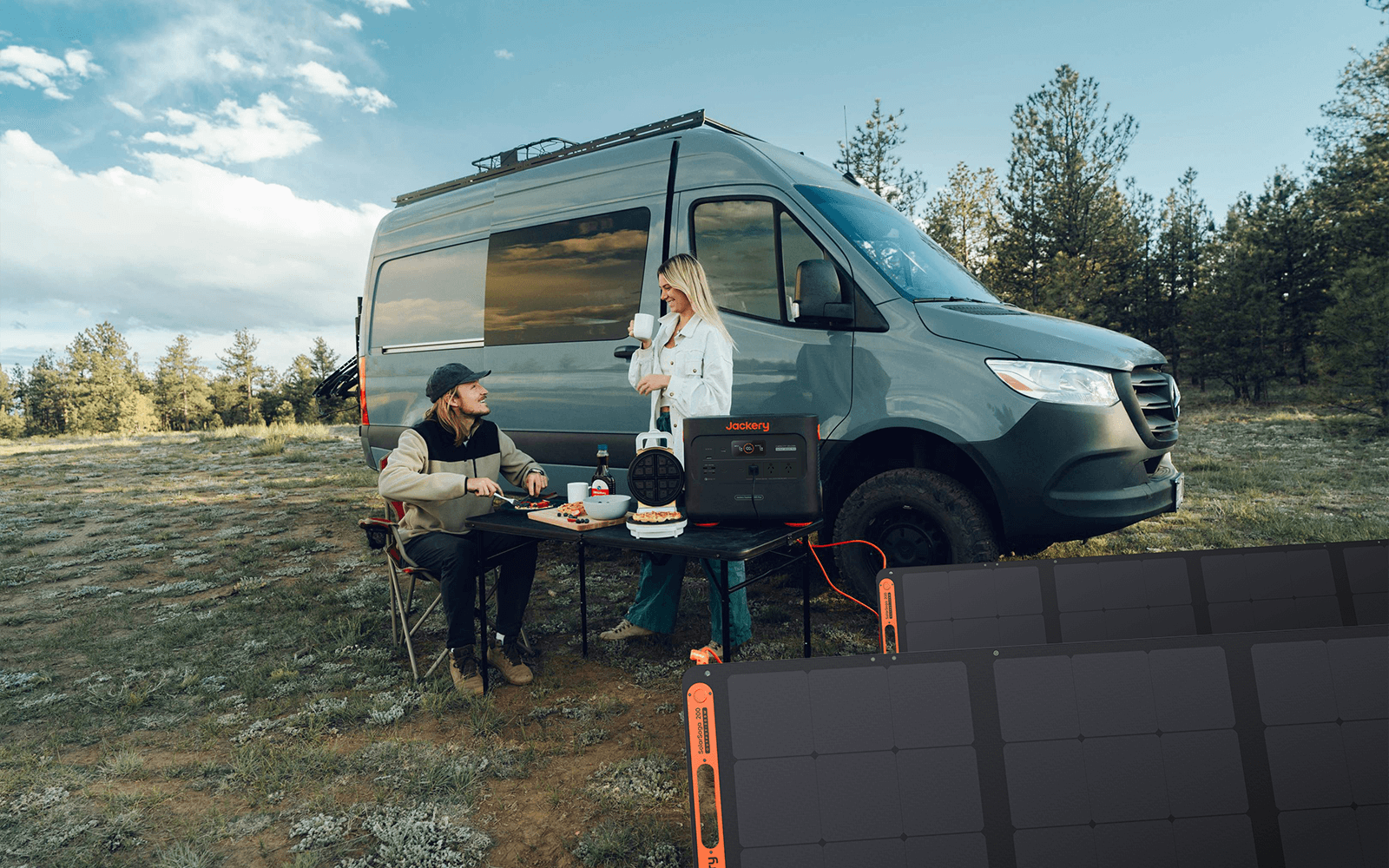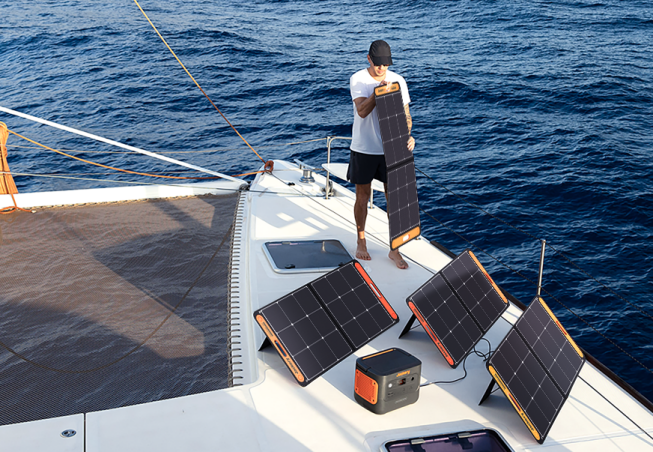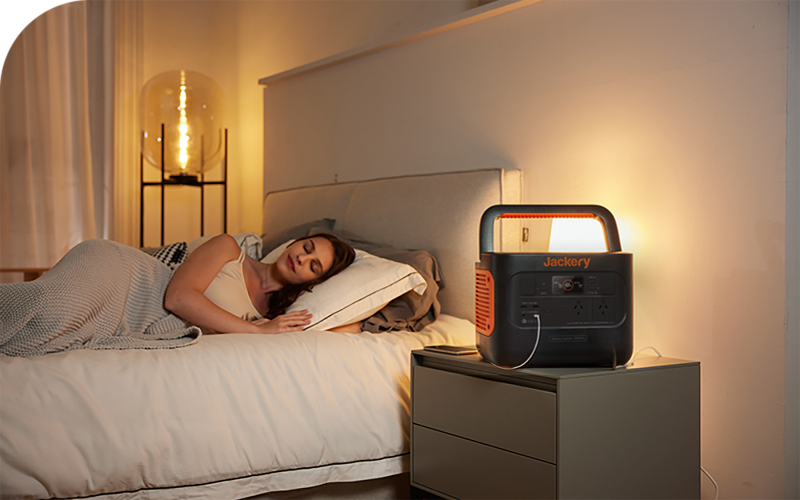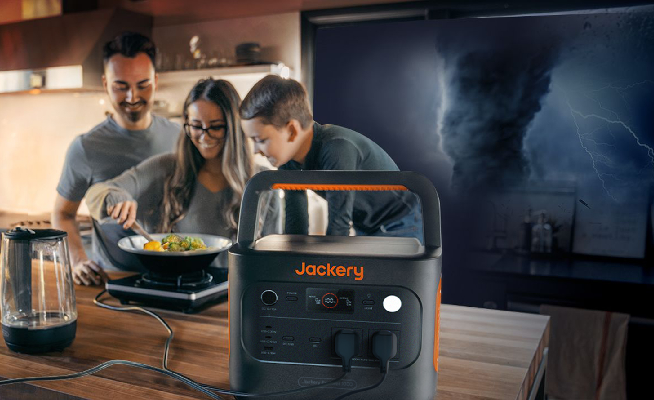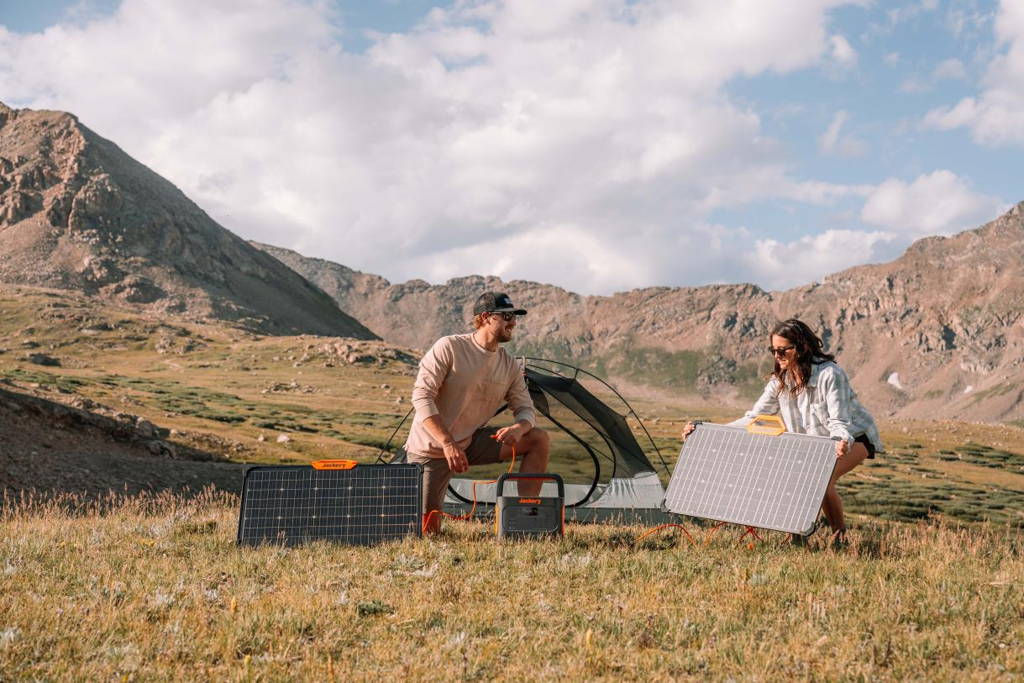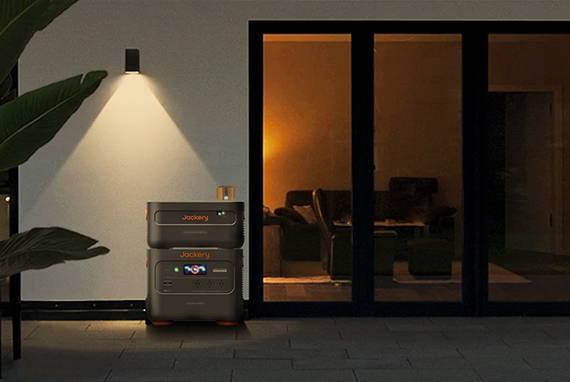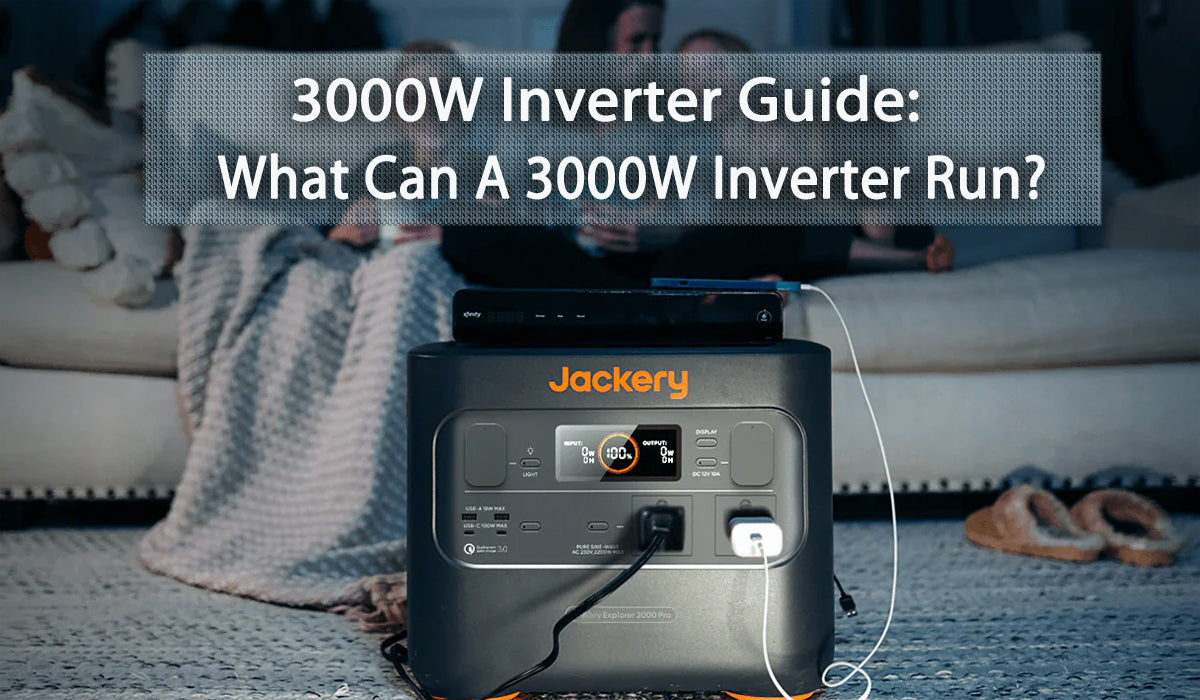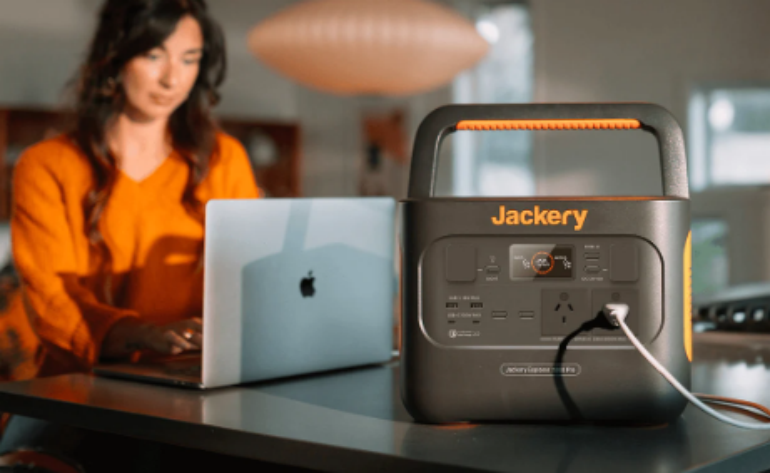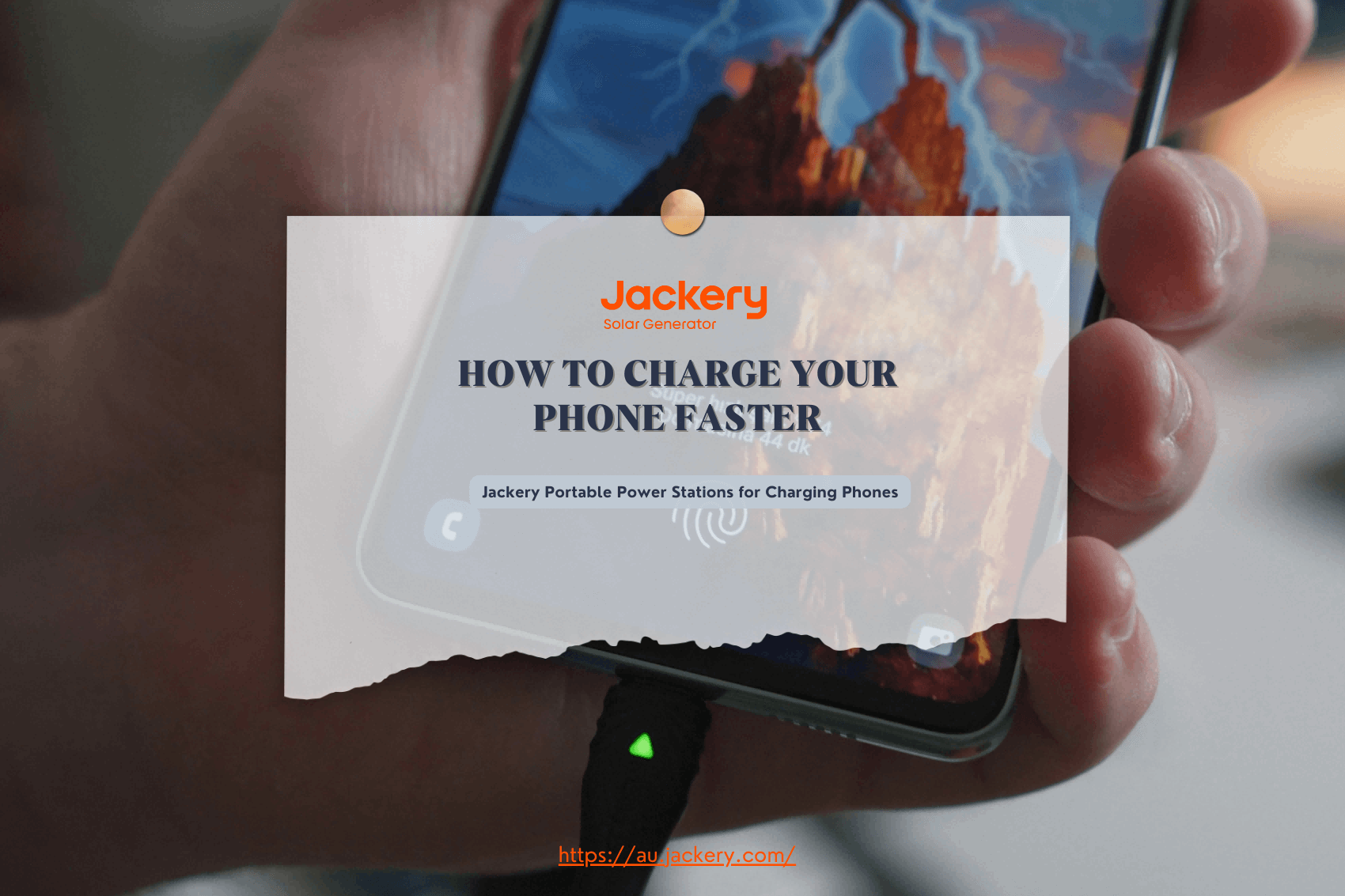What Is a 3000W Inverter?
3000W inverter can be defined as machines that transform Direct currents ranging from batteries or solar panels into Alternating currents, which is the form of electricity that is required by most appliances. Therefore, 3000W inverter can work as a converter between renewable systems and daily electrical consumption. They play a significant role in enhancing the performance of the appliances. This characteristic is critical in non-conventional power systems as well as stand-alone systems.
Characteristics of a 3000W Inverter
High Power Output: This Inverter can easily feed appliances with above 3000 watts of power, guaranteeing that devices such as air conditioners and washing machines will work longer hours.
Wide Range of Uses: In addition to just home networking devices and tools for weather, these inverters help power utility-based systems such as medical devices, industrial appliances, entertainment equipment and even electric grills and portable fans.
Advanced Technology: Almost all inverters available today make use of pure sine wave technology, including the models made by Jackery, resulting in efficient power delivery. This doesn't put sensitive devices at any risk due to surges or changes in voltage.
Safety and Durability: The grid tie inverter has a long lifespan since it is equipped with advanced cooling technology, which prevents it from throwing hot, surge protection systems, and overload systems, which increases its reliability for long durations.
Advantages of Switching to a 3000W Inverter
Self-Sustaining Lifestyle: Gives individuals and communities the ability to break free from conventional power networks and provides energy for necessary devices and gadgets.
Ideal Backup Power Source: A reliable energy source in case of abrupt power cuts or disasters, ensuring that critical systems survive.
Green & Free Energy: Using solar-powered inverters is a great way to get cost-effective and renewable energy.
Enhanced Energy Security: This guarantees that energy will always be available in case of issues with the outside power grid.
What Can a 3000W Inverter Run?
The true power of a 3000W inverter comes in the wide variety of devices and appliances it can run, making it reliable and suitable for a multitude of situations. Anything from household items to industrial devices and tools can have a multitude of uses and never disappoints.
Capacities and Technologies
With a maximum load of 3000 watts, a 3000W inverter is guaranteed to continuously run medium-sized and heavy electrical devices. This Inverter can run a plethora of electrical devices with ease and is extremely useful for societies and businesses. in addition to providing stable and adequate power for critical appliances.
Supported Appliances and Devices
Household Devices:
· Microwaves: With a four-and-a-half minute run time, a microwave can perform cooking, reheating or defrosting. In short, it's perfect for meal preparations in a hurry.
· Refrigerators: The main purpose of these appliances is to keep food items fresh and safe in order to increase their shelf life.
· Air conditioners: These are necessary for people who live in warmer climates as they can cool down a room or place during the summer season.
· Washing machines: These appliances are perfect for camping as they can wash various types of clothes, including light and heavy shirts and pants.
Entertainment Systems:
· These are useful appliances that provide fun and relaxation and do not require a lot of electricity. Consoles, televisions and sound systems are perfect for both outdoors and indoors.
Power Tools:
· These can be used for construction and fixing tasks in areas that lack electricity. Appliances like grinders, saws and drills are ideal as they are compact and easy to handle.
Outdoor Equipment:
Electric fans, portable refrigerators and electric grills are ideal for camping as they make the whole experience much more comfortable.
Medical Devices:
Dependable for vital apparatus such as CPAP machines, oxygen concentrators and infusion pumps, thus providing continuous healthcare assistance.
Renewable Energy Systems:
It works well with solar panels and batteries and makes a significant contribution to sustainable living strategies.
In-Depth Guide on Wattage
Refrigerator: 300-800W. Heating items, some exceeding. Surge current sometimes goes up to 1200W.
Microwave: 800-1500W.
Washing Machine: 500-2000W (depends on load and features).
Air Conditioner: 1200-2500W (depends on BTU capacity of AC).
Laptop: 50-100W.
Television: 100-400W.
Electric Grill: 1000-1500W.
Further Considerations
Efficiency: Modern 3000W inverter are manufactured with pure sine wave technology that provides clean and stable power to protect your electronic devices from possible damage.
Load Balancing: Compute the wattage of each device. To avoid overheating or, at worst, shutting down, take care not to exceed the 3000W combined load limit.
Backup Power: An Occurrence where this Inverter turns out to be one of the best during power outages as it gives you the assurance that once power goes back, all your items will still be intact.

Can a 3000W Inverter Run a Fridge?
This Inverter is perfect for powering up regular-grade and energy-saving fridges so that you can safely store food and medicine even during blackouts. It opens the door to possibilities for people who are willing to go off the grid or want to have an emergency backup.
Key Considerations
Running Wattage And Startup Surge :
A refrigerator will usually require around 300 to 800 watts to operate, but it can require two to three times that amount at the time of startup, depending on the type and model of the fridge. For instance, older fridges or bigger ones tend to have higher requirements in their startup surge. Inverters with a capacity of 3000W are specially made to run energy-star-rated refrigerators with low startup surges. Therefore, they will be even more suitable for 3000W inverter.
Load Management:
Make sure other connected devices do not use more than the available inverter wattage minus the required use of the refrigerator. For example, running a refrigerator with low-wattage lights or a laptop is generally safe. A bad practice would be running a refrigerator while having an extension cord with a microwave oven connected to the same Inverter.
Additional Insights
Benefits Of Energy Efficiency: A modern-day conservation refrigeration will pair perfectly with a 3k inverter as the Inverter will use less energy while decreasing the time when the solar batteries are used and increasing the runtime.
Wireless Application: In off-grid conditions, a 3000W inverter allows for refrigerated transport of food, drinks, and medical necessities, bringing reassurance in case of lengthy outages or staying in secluded areas.
Checking Compatibility in a Sequence
1. Locate the label on your refrigerator for its running and surge wattage specs, or consult the manufacturer for more information.
2. If there are any other essential devices you will connect while running the fridge, count their combined wattage together with that of the fridge.
3. Make sure the overhead of all the appliances, including the fridge, is less than 3000W, which is the maximum capacity of the Inverter.
4. Keep a check on your appliances to ensure they do not exceed the limit and avoid unnecessary contention.
How Long Does a 3000W Inverter Last?
In essence, these factors determine the Lifespan of a 3000W.
1. Average Lifespan
For devices manufactured by reputable brands such as Jackery, the suggested period of time during which these devices can function without malfunctioning is between 10 years and 15 years. The suggested lifespan increases once the device has been maintained properly and used regularly. However, the Lifespan might be underestimated by users who only use it occasionally. On the other hand, frequent abuse will almost lower this Lifespan.
2. Factors Affecting Longevity
Quality: The material and the construction of the Inverter play an important role in its ruggedness and extraction longevity. Premium inverters such as Jackery offerings are made with advanced components and technologies that allow for improved wear and tear to performance inference.
3. Usage Patterns
Heavy Use: Driving the Inverter at its rated maximum capacity for a longer period will invariably cause overheating, stress and damage to internal devices.
Light Use: Running the Inverter on limited power input with breaks can boost the product's life cycle.
4. Maintenance:
The Inverter should be cleaned so that no dirt or dust accumulation takes place.
Inspection: The Inverter should be checked regularly for loose connections and damaged cables. This will prevent the possibility of short circuits.
Cooling Systems: Allow the cooling mechanisms to operate without any blockage to maintain the required temperatures.
5. Environmental Conditions:
Installing the Inverter in a dry, shaded area where ventilation is ideal can alleviate the effects of high humidity and extreme temperatures. This is critical as both these factors lead to wear and tear at a quicker pace.
Inverters operating on a salty coast are prone to air and environmental corrosion and thus need additional protection or consistent maintenance.
6. Load Balancing:
The average lifetime of an inverter diminishes due to overloading. Thus, the connected devices must not exceed the rated capacity, or there could be a risk of system shutdown and damage. It is wise to calculate the combined wattage of the connected devices to avoid such scenarios.
7. Maximizing Lifespan:
To maximize the amount set by the manufacturer, use quality cables and connectors and ensure the firmware is updated regularly. Also, it is better to follow the instructions set by the manufacturer for operations.

How Many Batteries Do I Need to Run a 3000W Inverter?
Battery requirements vary depending on several factors:
Key Considerations Before Calculation
Voltage Rating: One thing you should remember is that inverters usually require 12V, 24V, or 48V systems to function. The voltage rating then determines whether that engine would require more batteries stacked or wired in parallel. To determine how many amps a 3000w inverter draws, you need to divide its wattage by the system voltage; for example, 3000W ÷ 12V = 250 amps.
Expanded Calculation Steps
Convert Watts to Amps:
· Use the formula Amps = Watts / Voltage.
· Example: For a 3000W inverter on a 12V system: Amps = 3000W / 12V = 250A.
Estimate Runtime:
· Multiply the total amp-hour (Ah) requirement by the desired hours of operation.
· Example: For 2 hours of operation: Total Ah = 250A × 2 hours = 500Ah.
Determine Battery Capacity:
· Match the total Ah requirement with the rated capacity of available batteries.
Configuration:
· If using a 12V system, connect batteries in parallel to increase capacity. For higher voltage systems, batteries must be connected in series to meet the voltage requirement while maintaining appropriate capacity.
Practical Example
3000W inverter for “3 hours” on a 24V system:
· Step 1: Amps = 3000W / 24V = 125A.
· Step 2: Total Ah = 125A × 3 hours = 375Ah.
· Step 3: If using 125Ah batteries, you'll need three batteries connected in series for a 24V configuration.
Evaluating energy requirements and correct battery parameters guarantees reliable operations of the Benjamin-Monster 3000W inverter with no possibility of an energy drain or inefficiencies within the system's operations.
How Many Solar Panels Do I Need for a 3000W Inverter?
You can be sure how many solar panels that you can connect in 4 steps.
First, you need to know how much energy is required and the system efficiency, along with the characteristics of the panels you're going to utilize. This helps to keep the Inverter in good health without it overloading or going without energy.
1. Assess Power Needs: Calculate the total daily energy consumption by listing all devices and their runtime. For instance, if your daily energy usage is 9,000Wh (watt-hours), this becomes the benchmark for determining panel requirements.
Example: Running a fridge (500W) for 10 hours = 5,000Wh.
2. Account for System Efficiency: Account for Grid Loss: Any conversion losses from solar panel systems that occur due to other areas like conversion, wiring and even temperature environments should be taken into account. Typically, assume a 20-25% loss. To compensate, increase your calculated energy needs by this percentage. For example, if you need 9,000Wh, accounting for a 25% loss requires panels producing 11,250Wh.
3. Match Panel Output: Sell suitable solar panels that can do the Inverter's load. For required watt-hours, divide by the peak amount of daylight hours available in your locality, for example, 5 hours a day.
Example: If the Grid Supply is 11250W and with 5 hours of sunlight available, using a Combined Quantity of above47886W is a must.
4. Consider Panel Characteristics: Focus on efficient and durable panels. Where less area is available, Monocrystalline panels are the most efficient and less space-consuming type of panel and, therefore, preferred.
Adding on Sufficient Panel Capacity: Where energy consumption is likely to increase, extra available capacity should be included in order to meet future energy needs.
How to Use a 3000W Inverter?
Emergency Backup:
A 3000W inverter is a dependable power source during outages, ensuring uninterrupted operation of critical appliances such as refrigerators, lighting, and communication devices. It can also support medical devices, making it invaluable in emergencies.
Off-Grid Living:
Ideal for remote houses and cabins, the Inverter is able to sustain off-grid lifestyles by powering an array of devices, including water pumps, heating devices, cooking, and even lights. It works efficiently with solar panels and battery systems, which is a great option as it fits the needs of those who want to utilize renewable sources and aim for self-sufficiency. This is ideal for people or communities that reside far from the power grid.
Outdoor Camping:
Add flavours to your camping events with a 3000W inverter, as it allows you to use portable refrigerators, electric grills, fans, bulbs and small entertainment systems. You can watch movies outside beneath the night sky and even have a complete food course, all because of this Inverter, which lets you enjoy the luxuries advanced technology has to offer even in the outdoors. It works great for campers, RV users, and outdoor people.
Industrial Applications:
In the construction, agricultural, or workshop sector and other areas that can't access grid power, they enhance the efficiency of small-scale industrial tools, including drills, welding machines, and compressors. This capacity of inverters is equally efficient for multifarious purposes.
Recreational Vehicles (RVs):
RV 3000-watt Inverter allows appliances to harness electricity for air conditioning, electric bikes, and entertainment, as well as for any kitchen appliances. Consequently, every single trip feels like being in a fully equipped home rather than being parked on the roadside.
Special Events and Outdoor Gatherings:
If you are travelling to a far-off marriage location for an outdoor wedding, a 3000W inverter would quite literally work best as a replacement for a portable generator for the PA system, decorative lights, catering equipment, audiovisual equipment, and many more such appliances. Additionally, its quiet operation and portability make supplies for any other outdoor wedding, family reunions, and concerts easier, making it the ultimate choice.
Disaster Preparedness:
In areas where natural disasters are bound to take place, being fully prepared is half the battle that is won. Having a 300-watt inverter by your side can significantly enhance your preparedness for a natural disaster, as you are able to power up essential appliances like emergency lights, communication devices, and much more.

Jackery Portable Power Stations Explained
The Importance of Portable Power Stations
There is no doubt that today's world calls for portable power stations that serve the purpose of being useful in both emergency situations and recreational activities. These devices produce clean and mobile power that allows users to plug in their important gadgets and appliances anywhere. Regardless of whether there's a natural disaster, camping or going on an off-grid trip, portable power stations make sure power is available for use when you need it the most.
What is Jackery?
With its recognition spanning across the globe, Jackery is a name that is considered to be synonymous with portable power and innovative power solutions. The Jackery Portable Power Station series is at the forefront of innovation as it perfectly incorporates technology and ease of use.
Jackery Explorer 2000 Plus Portable Power Station
When it comes to convenience, the Jackery Explorer 2000 Plus Power Station does quite a good job of earning that specific label as it is quite portable and has a large range of applications. Having a capacity of 2-12 kWh, this power station can simultaneously power large appliances and numerous devices. The unit is also designed to handle rated power of up to 4000W with peak power load management of about 6000W, which serves its purpose well in high-demand situations.
User Review:
Owen J. shares, "It was during the last hurricane season that my family made use of the Jackery power stations. To help endure the troublesome times I was going through, it proved to be such a reliable and very easy-to-use device."
Jackery Explorer 1000 Plus Portable Power Station
With a capacity range of 1.25-5 kWh, the Jackery Explorer 1000 Plus Portable Power Station is perhaps optimal, especially for frail energy requirements. Jackery Explorer 1000 Plus is perfect for home backups, outdoor activities or even when on business trips. The combination of the long Lifespan of the device along with the prospect of solar charging adds to the feature of users having clean energy at any time and place.
User Review:
2 years before, I bought the Jackery Explorer 300, which was perfect for my business travels. This time, I purchased the Jackery Explorer 1000 Plus as an aid for home emergencies. It is quite reliable, providing useful power backup as well as ensuring I am not worried."
Appliance Working Hours with Jackery Portable Power Stations
|
Appliances |
Explorer 2000 Plus (2-12 kWh) |
Explorer 1000 Plus (1.25-5 kWh) |
|
Refrigerator (300W) |
5,4-32,4 hours |
3,4-17 hours |
|
Washing Machine (500W) |
3,3-19,8 hours |
2-10 hours |
|
TV (100W) |
16,3-81,7 hours |
10,5-30,5 hours |
|
Coffee Maker (550W) |
3-18 hours |
1,8-9 hours |
|
Lighting (10W) |
163,4-817 hours |
101-505 hours |
3000W Inverter FAQs
1. How many panels can a 3kW inverter handle?
Assuming each panel is rated at around 250-300W, a 3kW inverter may accept up to 10 to 12 solar panels.
2. What happens if you connect too many solar panels to an inverter? Connecting excessive solar panels will lead to issues such as energy inefficiencies where the Inverter does not make use of the total enabling power provided, meaning some energy goes to waste.
3. How long will a 100Ah battery last with a 3000W inverter?
For example, a load of %100 can be the upper limit for how long a 100Ah battery with a 3000 watts inverter can support around 20 to 30 min. Other variables, such as load conditions and the use of multiple parallel configured batteries, can lead to extended hours ranging explore time.
4. Will a 3000W inverter run an air conditioner?
To power an air conditioner with a 3000W inverter, the wattage draw of the air conditioner should not exceed the Inverter's capacity. For example, small to medium-sized air conditioners usually fall within the Inverter's capacity; therefore, it is an excellent alternative when there is a lack of electricity or when you're off the grid.
Final Thoughts
The 3000W inverter works as a robust and reliable energy source for everyone, meeting their different energy demands, such as running home appliances or making a living off the grid a possibility. It has become an integral aspect of the modern renewable energy environment as it acts as a means of converting energy into something rationally usable.
If you are looking for effective and reliable solutions that allow moving around, then Jackery's products are from highly reputable companies and come equipped with new features and proven resistance to faults. Find the most suitable source of power among the variety of Jackery portable power stations. For clear information and useful tools to fit renewable energy into your lifestyle, visit Jackery Explorer product pages.

